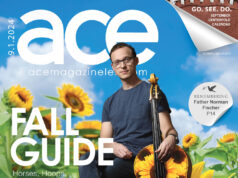January 1995
What Lexington Needs: Crystal E. Wilkinson – An End to Fear and Silence
By Crystal E. Wilkinson
Poet and Short Fiction Writer
 “Fear, that is what is going to kill us all,” my sister-friend and co-worker told me on the phone. It was the day after “the incident,” that October day a police officer’s bullet pierced the head of Antonio Sullivan on Breckinridge Street and people, mostly youth, poured into Lexington’s downtown.
“Fear, that is what is going to kill us all,” my sister-friend and co-worker told me on the phone. It was the day after “the incident,” that October day a police officer’s bullet pierced the head of Antonio Sullivan on Breckinridge Street and people, mostly youth, poured into Lexington’s downtown.
We had watched as white folks that we had come to know as friends huddled in corners, locked doors and panicked for days—fearful of the unknown.
I must agree with my friend. Fear, coupled with silence, created that pot of hot water that reached its boiling point on the back burners of Lexington that October day. On the surface, it was about the unfortunate death of Antonio Sullivan, but beneath, it was nothing new.
It was not a new fear—not a new silence—but the same old fears and silences that had been brewing for many years. The fears and silences that allow people to form their own distortions of truth. When silence is embraced as a way of life, fear of those who are different from ourselves becomes a disdain for all that is not familiar.
Lexington must open its eyes, remove the veil of silence and allow the fear to dispel. By utilizing the power of voice, the boiling pot begins to cool. And voice can come in many forms—a conversation, a poem, and art piece. It’s dealing with only the familiar that keeps us silent and fearful.
 As volunteer director for the Bluegrass Black Arts Consortium, I watch the people who peer into the windows of the consortium. A shingle proclaiming the name of our organization and two large African ancestral figures gaze back in the faces of the window watchers. I can often see the curiosity in their faces. They look again, searching for the familiar. When they don’t find it, some are brave enough to open the door and come in anyway, but most choose to remain onlookers and not enter what they perceive as a foreign place.
As volunteer director for the Bluegrass Black Arts Consortium, I watch the people who peer into the windows of the consortium. A shingle proclaiming the name of our organization and two large African ancestral figures gaze back in the faces of the window watchers. I can often see the curiosity in their faces. They look again, searching for the familiar. When they don’t find it, some are brave enough to open the door and come in anyway, but most choose to remain onlookers and not enter what they perceive as a foreign place.
It is within these “foreign” places that silences are broken and fears dispelled through an exchange of voices. Art can be a conduit for this voice exchange—read a book that you wouldn’t usually read, view a piece of art you usually wouldn’t look at, listen to a song that isn’t your type of music.
Fear could kill us all and silence is not golden.







